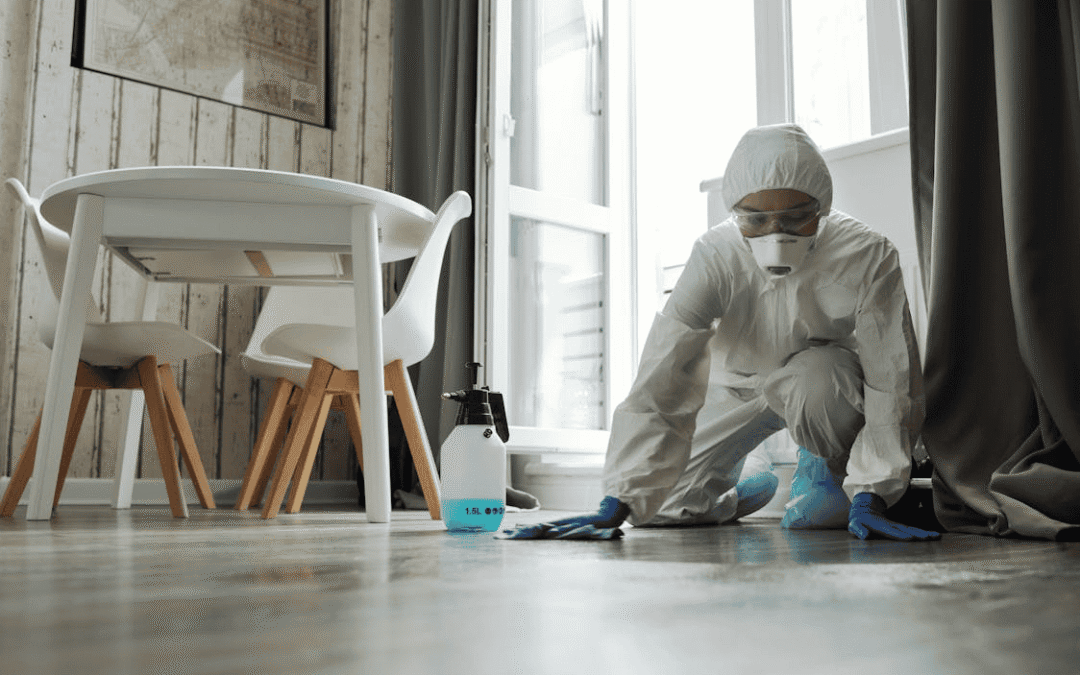Indoor allergens are more common than you might think. Research shows that over half of U.S. homes contain at least six detectable allergens. Rugs and carpets are often the main culprits. They trap dust mites, pet dander, mold spores, and pollen deep in their fibers. Left untouched, these particles build up and get stirred into the air through everyday activities. For allergy-prone households, professional rug cleaning offers one of the most effective ways to remove these triggers and improve indoor air quality.
What Triggers Allergies at Home?
Area rugs and carpets tend to hold onto more than just dirt. Here are the most common sources of indoor allergens:
- Dust mites – thrive in humid environments and leave behind allergenic waste
- Pet dander – skin flakes, saliva, and urine particles that cling to carpet fibers
- Pollen – tracked indoors on shoes or blown in through windows
- Mold and mildew – form in damp areas and release spores that irritate the lungs
- Cockroach particles – often found in kitchens and bathrooms
These allergens collect in soft flooring and get kicked up as you walk. Even the fine debris left behind by standard vacuums or the wrong cleaning products can lead to irritation. Choosing the right flooring helps, but so does choosing a trusted carpet flooring store that understands how different materials affect allergy management.
Rugs and Air Quality
Rugs act like filters. They trap airborne allergens that would otherwise circulate through the room. But over time, as they get saturated, they shift from being a filter to a source. When carpets are full, simple things like walking or moving furniture can release trapped dust back into the air.
That’s why regular cleaning (especially carpet cleaning for dust removal) is essential. Surface vacuuming only goes so far. Deep cleaning methods that remove what’s embedded in the rug backing and fibers are what make a long-term difference.
What Makes Professional Cleaning Different?
Vacuuming with a HEPA filter helps. However, to truly reduce allergens, the cleaning method has to go deeper. Two professional techniques stand out:
Hot Water Extraction (HWE)
- Injects hot water into rug fibers, then extracts it with powerful suction
- Proven to reduce dust mite allergens by 91%
- Cuts cat allergens by 95% and dog allergens by 97%
- Also reduces airborne mold by 55%
Dry Steam Cleaning
- Uses steam over 212°F to kill dust mites and denature allergens
- Especially effective when paired with HEPA vacuuming
- One study showed an 85.5% reduction in dust mite allergens
These allergen and dust mite carpet cleaning methods work through a combination of heat, suction, and detergents designed to break down dirt and allergens, not just move them around.
Here’s a quick summary:
| Cleaning Method | Allergen Targeted | Surface Reduction | Airborne Reduction |
| Hot Water Extraction | Dust Mites | 91% | Not specified |
| Cat Dander | 95% | 67% | |
| Dog Dander | 97% | Not specified | |
| Mold | — | 55% | |
| Dry Steam + HEPA Vac | Dust Mites | 85.5% | Not specified |
More Than Just Allergy Relief
Consistent deep cleaning offers several carpet cleaning benefits that go beyond reducing allergens:
- Better indoor air quality
- Extended rug lifespan
- Fewer odors from spills or pets
- Lower bacteria and mold levels overall
When combined with thoughtful design choices, your flooring can help reduce allergen buildup. For example, light-toned, low-pile rugs show dirt sooner and are easier to clean. If you’re planning a refresh, this carpet color guide may help balance style and practicality.
How Often Should Rugs Be Professionally Cleaned?
If allergies are a concern, cleaning once a year won’t cut it. Allergens don’t wait for an annual deep clean to build up. They accumulate daily and become embedded quickly, especially in rugs used in common areas.
Here’s a general guideline:
- Every 3–6 months of carpet cleaning for allergies
- Every 6–12 months if you have pets or children
- Every 12–18 months for general upkeep
- Every 3–9 months in high-traffic zones like hallways and living rooms
Homes in Brampton and surrounding areas can access expert rug cleaning solutions that help reduce household allergens. These services often include hot water extraction or steam methods backed by scientific research and safe for families, pets, and sensitive individuals.
Support Cleaning With Smart Daily Habits
Even the most thorough allergy carpet cleaning won’t last if allergens keep coming back. Pair deep cleanings with these habits to keep levels low:
- Use a HEPA vacuum weekly (or more often in high-use areas)
- Keep indoor humidity between 30 and 50 percent to stop mold and dust mites
- Avoid wall-to-wall carpets in damp areas like basements
- Wash bedding weekly in hot water
- Take shoes off at the door
- Keep pets groomed and out of sleeping areas
If you’re starting a new cleaning routine, try focusing on one habit per week to build consistency. These small shifts can add up quickly to make a real difference in your home’s air quality and comfort.
Final Thought
Professional rug cleaning is one of the most effective ways to cut down on indoor allergens and support your family’s health. It reaches deep into fibers where allergens hide and offers relief that regular vacuuming can’t match. When combined with smart flooring choices, humidity control, and consistent home care, it can help turn your rugs from a problem area into part of the solution.
Looking to learn more about keeping your home comfortable and healthy? Explore more pro tips for everyday improvements that make a real difference.

Recent Comments